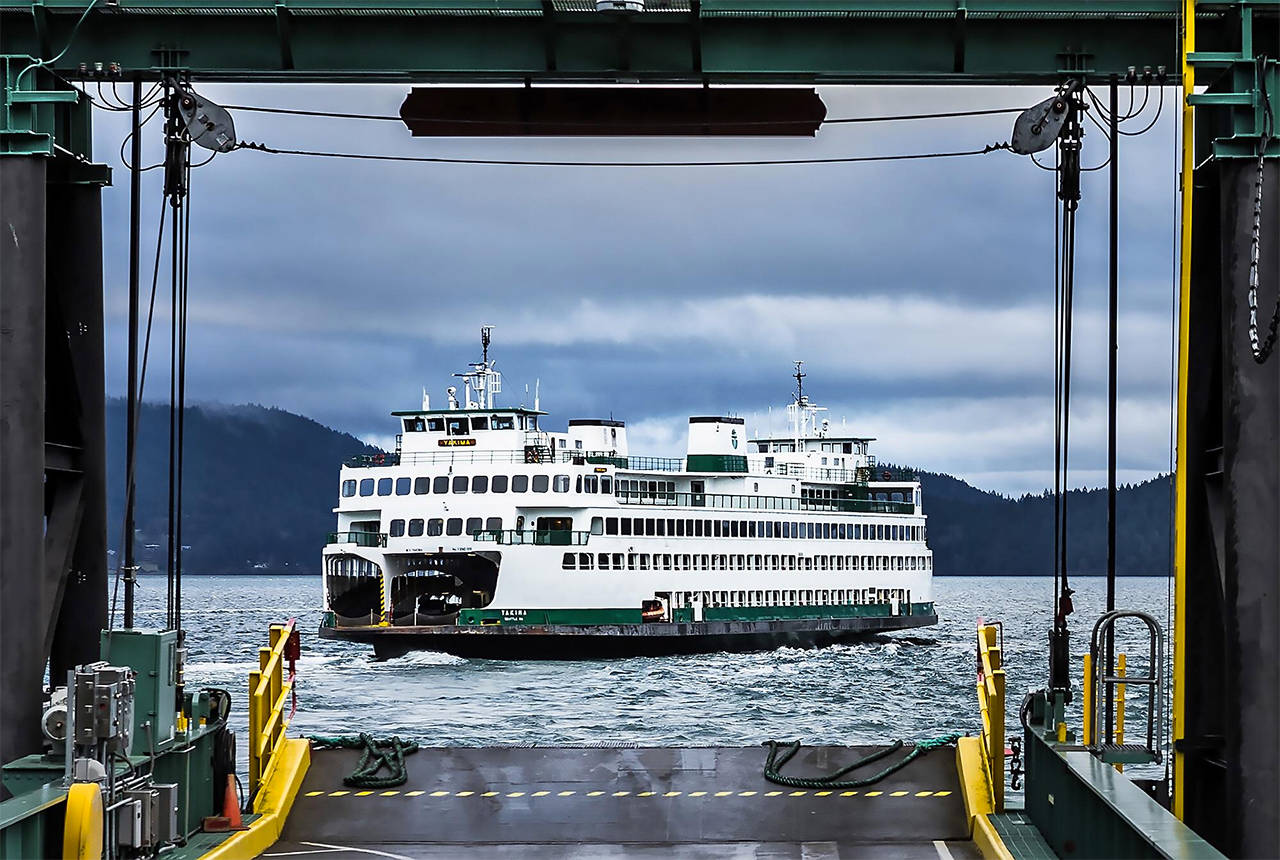It’s going to be a slow summer with the M/V Yakima running at half-speed.
The 144-car vessel that services the San Juan Islands sustained a damaged propeller when it hit something underwater, possibly a log, on the morning of April 22.
“While it was out of service, we were able to make underwater repairs necessary to get the Yakima back in service,” said Washington State Ferries spokesperson Broch Bender. “These underwater repairs were not complete, however, so the vessel can only operate within specified speed restrictions to ensure passenger comfort.”
Bender said the Yakima is scheduled to enter dry dock for full repairs on July 30. Until then, the vessel will continue to run slower, which dominoes throughout the route, causing each ferry to arrive and depart later than scheduled.
Bender said WSF encourages riders with reservations to still arrive 30 minutes prior to the scheduled departure to avoid losing their reserved space. WSF also added a 1:55 p.m. departure from Anacortes to Orcas Island on Thursdays for the remainder of the spring schedule. This scheduled sailing was previously only available Fridays and Saturdays.
“We have no available service-relief vessels because of the unplanned maintenance on the Elwha,” Bender said. “The current [estimated time] for the Elwha returning to service is early September. If it’s not complete by then we’ll have to keep the Elwha out of service until repairs are completed.”
The Elwha, another San Juan Island route regular, is in dry docking to repair steel corrosion under the deck, said Bender. San Juan County Councilman and Ferry Advisory Committee member Rick Hughes said the damage to the Elwha is roughly $11 million that was unplanned. With the Elwha out of commission, only one ferry – the Chelan – is able to take the route to Sidney, British Columbia.
“If something happens to the Chelan or another boat and the Chelan has to be taken somewhere, then the Sidney runs could be terminated – which, to me, is a huge detriment, not only to the Sidney and Anacortes communities,” said Hughes.
Last summer’s ferry interruptions cost island communities a substantial amount of income usually gained in the summer from tourists via lodging, food sales and dining expenses, said Hughes. In mid-July 2017, two ferries broke down prompting an alternate schedule for 13 days. Then, in mid-August, another ferry had mechanical issues causing the routes to return to limited sailings for an additional three days.
The Yakima went out of service on Sunday, July 16. The Kitsap, the only backup vessel for Washington State Ferries’ 22 boats, was also out. As a result, the Anacortes/San Juans route operated on a four-boat “emergency” schedule that lasted until July 29, when the Chelan was brought in from the Fauntleroy/Vashon/Southworth route.
On Aug. 6, the Samish, which was built in 2015, had a propeller shaft coupling failure, returning the route to just four vessels. On Aug. 9, a repaired Yakima returned and regular sailings resumed.
With decreased capacity and an alternate schedule, travelers experienced all-day wait times, voided reservations and canceled plans. An interruption to the international travel could be equally detrimental to the islands’ economy.
“We have five boats on the summer schedule, four of them have gold stripes. In the nautical world, a gold stripe is a service of 50 years and it’s, like, a badge of honor, but it’s also really potentially scary because these are boats that have done great service at 20 hours a day for 50 years of their lifespan and they’re going to be more prone to break down,” Hughes said.
Additionally, the Samish, the youngest ferry in the San Juans, is undergoing its annual inspection and will be returning to the route in early June.
The Kaleetan is currently in dry dock as well, undergoing engine repairs and having its annual inspection, Bender explained. That ferry is expected to return on June 25 and will serve as the relief ferry until July 30, when it will fill in for the Yakima for approximately five weeks.
“Our general feeling was, level of service is level of service. Which is better than a reduction of service,” Hughes said. “I’ve always felt that while it is inconvenient for a lot of us in our community to have ferries be late, of any community in the ferry system, we’re the ones that would rather have service over on-time performance. Even if it messes things up. Just because this is our only way to get here.”
Hughes encouraged the community to participate in WSF’s long-range planning process, which is open for comment until Thursday, May 24. He suggested that ferry riders contact the Legislature and the governor to express the importance of having reliable ferries operating in the San Juans.
“We need to pay for the backlog of maintenance. There’s close to $400 million in deferred maintenance that isn’t being done. … Most transit organizations have up to 20 percent in reserve, of vehicles. … We technically have one, but it’s really zero, and right now, we’re almost negative one,” Hughes said. “But the key thing is: we need new boats, don’t retire boats; repair the boats we have; find a dedicated funding source.”
To sign up for ferry alerts, visit wsdot.wa.gov. Provide feedback on WSF’s long-range plan at www.wsflongrangeplan.com.



